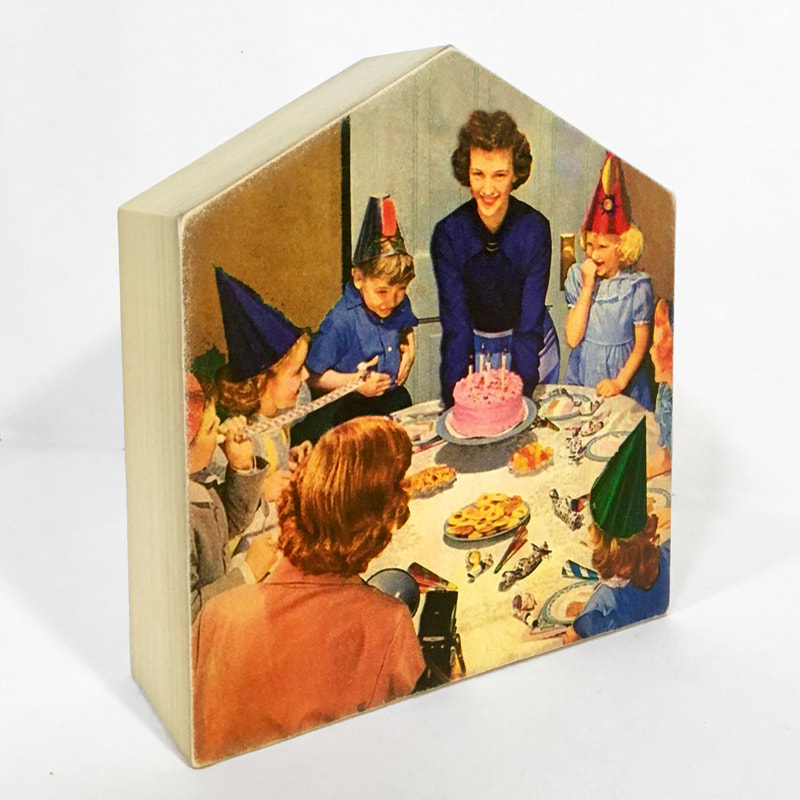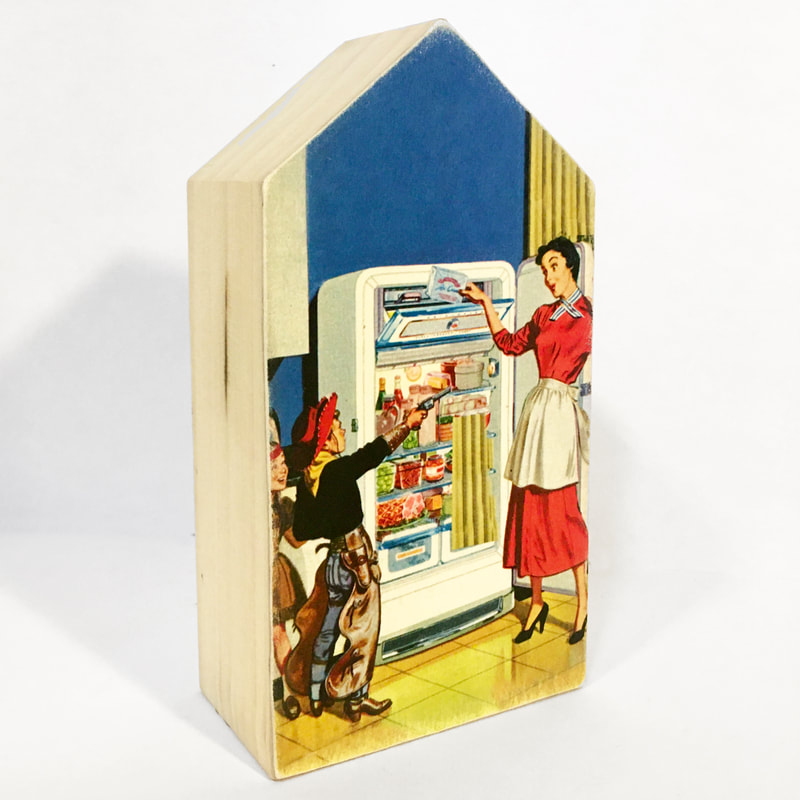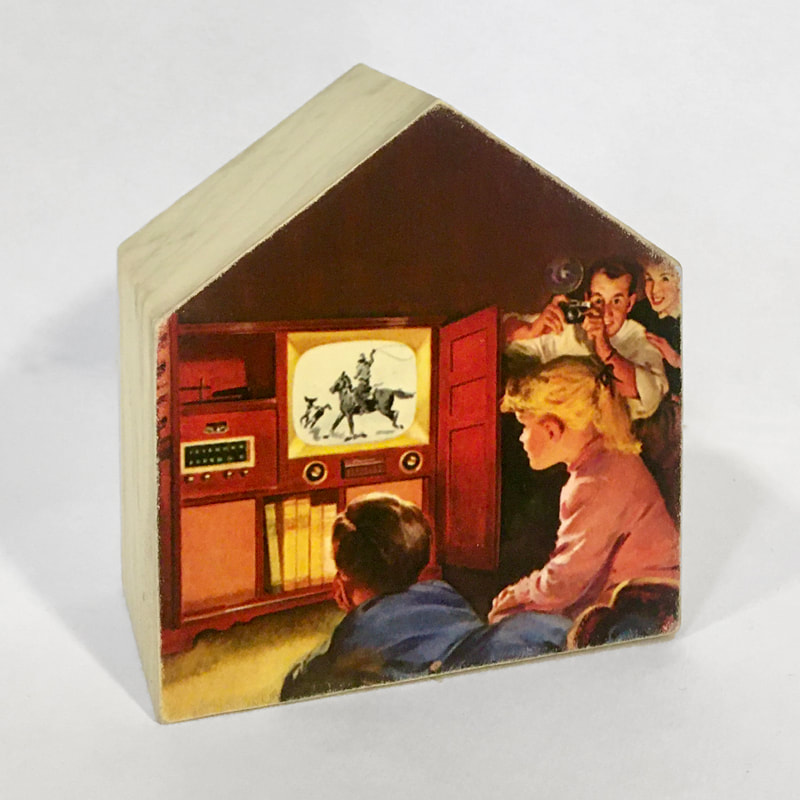THE AMERICAN DREAM
|
Digital prints from
1950's magazine ad illustrations mounted on house-shaped wood blocks |
Post-war families that had delayed having children because of poverty and wartime conditions, dreamt of a better life, a perfect life, and chose the suburbs as their ideal. New Jersey’s Levittown and California's Rohnert Park typify the planned suburban communities of the 1950’s and early 1960’s that were marketed to attract middle-class people into an area once populated with farmers. Many illustrations from magazine articles and ads of the 1950’s depicted this ideal dream of families enjoying material comfort.
But this conformity also had a dark side. For women, the charms of suburban life began to wear thin. Popular culture was replete with messages counseling women that their greatest satisfaction in life would come from raising children, tending to their husbands' needs, and owning all of the labor-saving household appliances that money could buy. Many began to identify a creeping sense that there ought to be more to life than childcare and housework. And minority women did not experience the ennui of suburban life because, by and large, they were barred from suburbia altogether. |
The American Dream: Rohnert Park - 5 1/2" wide
The American Dream: Levittown - 3 1/2" wide
Suburban affluence is the defining image of the good life under capitalism, commonly held up as a model to which all should aspire. Employed professionals can direct significant portions of their income to discretionary spending. This sector of society participates, consciously or unconsciously, in what is often called “consumer culture.” This consumerism often fails to fulfil its promise of a rich and meaningful life. The consumer class has been sold a lie.






















